Ladakh, the most memorable of our trips has been inscribed on our minds forever. Much of the words are lost or insufficient to describe the place that is Ladakh. The best possible way to even try to describe the "untouched" beauty of this place are the impressions that we captured thru our lens of its clear blue waters, its expanses of sand and rock, its tall majestic mountains and its ever-changing sky-scapes.
Here is a montage of Ladakh that lives in our minds....[This post was recently updated with description of the trip and more pictures]
Brief description:
Season to visit: May 15 to Sept 15 (the best month is August)
Places to visit: Leh city, places around Leh city, Khardung La, Nubra Valley, Pangong Lake, Tso Moriri Lake, Srinagar-Leh route, Leh-Manali route
Places we visited: Leh, surroundings of Leh, Khardung La, Nubra Valley, Pangong Lake, Tso Moriri Lake, and Leh-Manali route also known as Trans Himalayan Safari
Duration of trip: 12 to 14 days
Another destination worth visiting is Zanskar valley. One route to Zanskar is through Draas. If you are traveling to Zanskar from Leh, you will need to add another 6 days to the duration mentioned above - 4 days of commute to and fro and another 2 days of site-seeing.
There are three ways to get to Leh/ Ladakh
1. Delhi-Leh-Delhi flight (2 hours duration)
2. Srinagar - Kargil/ Draas - Leh highway (2 days/ 1 night, including a stop-over at Kargil/ Draas)
3. Manali - Leh highway (2 days/ 1 night, including a stop-over at Keylong/ Sarachu/ Pang)
We started on this enchanting trip from Hyderabad on 14th Aug 07 and landed in Leh early morning on 15th Aug. From there on it was a journey through a different world... exciting, adventurous and treacherous... Route: Hyderabad - Delhi - Leh - Nubra Valley Pangong Lake - Tsomoriri Lake - Pang - Keylong - Manali - Delhi - Hyderabad Our journey through this paradise ended on 26th Aug when we landed back in Hyderabad.
Day 1: Aug 15; 4:30 AM : We reached Delhi late evening on Aug 14 from Hyderabad and boarded the 4:30 AM flight to Leh. Considering none of the six of us had slept a wink that night we spent on Delhi airport, we fell asleep the moment the flight took off only to be awaken by some gasps of co-passengers. For a moment we were unsure of what the chaos was all about. And then we looked outside the windows of the aircraft - to find the majestic Himalayan mountain ranges below us - for the first time in our lives did we see the Himalayas from the top with snow-clad peaks shimmering in the early morning sun rays. We went berserk trying to capture some pictures of that most enchanting site below. What we didn't know was that this was going to be just the beginning of the best trip of our life-times (at least so far).
The landing in Leh is also a pretty fascinating experience. The aircraft literally sways on either sides maneuvering through the mountains and landing on a narrow strip of the runway - its sort of a roller-coaster ride on its own. When we got off the plane is when we realized that the Leh airport is in fact surrounded by mountains on almost all sides. We immediately got a sense of the cold weather outside as well.
We had hired a SUMO for the entire trip and it was waiting for us outside the airport when we arrived. It is important to arrange for vehicle, hotels, etc in advance since the airport is quite far from the main city. Hotels in Leh are relatively inexpensive but considering the seasonality of tourist season, it is better to book the hotel in advance as well. Most hotels have a garden in the center of the premises and mostly apples, and vegetables are grown in the garden. After settling down in the hotel, we went around the city to stroll, especially the market place with its rich variety of vegetables and fruits, especially apricots are a specialty here - both ripe and dried variety. It is also important that you take a day or two to relax and acclimatize in Leh before starting any traveling to surrounding locations. This is especially since one needs to adjust to the low oxygen levels in the atmosphere here. If you are the weak sorts, a pre visit to the doctor and carrying some medicines and an oxygen cylinder in case of altitude sickness with surely help.
Gate at entrance to Leh city
Leh market
Leh Palace
Shanti Stupa
Hemis Monastrey
View from Stoke Palace
Day 3: Aug 17 - Before you move around in surrounding areas of Ladakh, there is special permit that needs to be applied for and granted by the Indian army. Only with this special permit, can you go to places like Nubra, Pangong and Tso Moriri. One tip is to procure this permit the evening you land in Leh, you will need to carry your identification proof like passport/ PAN card, etc to apply for this permit.
The journey to Nubra Valley from Leh takes around 6 to 8 hours. Khardung La, better known as the "highest motorable road in the world" is at 18380 ft above sea level and on the way to Nubra Valley. If you are lucky, you will find snow at Khardung La whereas the rest of the Ladakh is pretty dry with hardly any snow during the summer months. You can also buy little trinkets from at the small army shop and also enjoy some hot tea and maggi at this altitude. It is advised to carry an oxygen cylinder here just in case.
From here we continued our journey towards Nubra Valley passing by some very picturesque views. Nubra valley is along-side the Nubra river. From here you could also go to Siachen which is famous (or rather infamous) for being the world's highest battle ground. When we visited, no civilians were allowed to go to Siachen, but now this route has been opened up for tourists as well.
By evening we reached a village called Diskit in Nubra Valley where we took up an accommodation in a small hotel managed by an elderly couple - very clean place, with large windows overlooking apricot trees and most importantly a home-made dinner that the duo cooked for us and that was served under the star-lit sky. There is something unique about the sky at night in Ladakh. Its studded with stars that shine like diamonds. May be because of the clear atmosphere, the stars were brighter and larger and too many in number to the point of being scary - like none of us had ever seen before.
Winding roads on the way to Khardung La
A stream on the way to Khardung La
Leh from a distance - on the way to Khardung La
At Khardung La
Day 4: Aug 18 - After a sumptuous breakfast of ladakhi rotis (bread), omelet, bread, and coffee, we set out in the Sumo towards the desert. Nubra Valley is a cold desert and is a unique topography where you will be able to see huge mountains made of solid rock and stones, sand dunes of the desert, little green patches near the fertile areas and the Nubra river flowing almost thru the desert and all this under a bright blue sky. You will also find double humped camels in this part. These are wild animals that live around the desert areas; the locals catch them to provide some joy-rides to tourists and then these camels are sent back into the wild. You can also visit Nubra monastery while you are there. After spending half a day in Nubra we started towards Leh.
Stream on the way to Nubra Valley
Picturesque views on the way to Nubra Valley
A monastery at Nubra Valley
Nubra Valley
Double-humped camels at Nubra Valley
Cold desert of Nubra Valley
Day 5: Aug 19 - The road trip to Pangong Lake take about 6 -7 hours. We started from Leh in the morning to reach Pangong Lake by 2:30 pm in the afternoon. We took pit-stops on the way since driving for even a few hours in that terrain is very tiring, and also because there were so many beautiful landscapes to click on the way. After what seemed like an endless drive, we finally saw the first glimpse of the stark blue water surrounded by shades of browns, ochere and grey. Pangong Lake is heaven on earth. The pristine waters of this lake tend to change colour according to sun's rays - beautiful emerald green and aquamarine blues that we had only seen on a colour palatte so far. This lake is also unique for another reason, 1/3rd of it is in India and 2/3rd in China. A night stay at the lake is recommended since the journey back to Leh can not be completed in the same day. There are a few tents available, as well as a few rooms - but don't expect any comforts in this inhabited place.
On the way to Pangong lake
Enroute - Himalayan Marmot
Pangong Lake
Day 6: Aug 20 - Early morning the next day we started for Tso Moriri Lake from Pangong lake. The travel time from Pangong to Tso Moriri is around 11 hours; returning on the same road to Leh but taking a diversion at a place called Karu 50 kms short of Leh. So, if you wish, you can go to Leh for a stop-over at night and then travel to Tso Moriri the following day. Since we were short on time, we decided on go to Tso Moriri directly. Distances in this difficult terrain are very deceptive. You may take 10 - 12 hours to travel a distance as short as 200 kms. Most of the roads are uphill or down, or half-built covered with mud and dirt and rocks, full of twists and turns. If you are planning a trip to Ladakh, its best to travel with a group so you won't get bored of the long drives to visit places. We got to Tso Moriri at around 4 pm in the afternoon. It was drizzling when we arrived but soon the shower stopped but these was an amazing drama of grey clouds hanging low, then replaced with some white clouds and then replaced by some enchanting indescribable colours at dusk that we witnessed. Tso Moriri is a small village. There are small hotels (these are more like home-stays than hotels really) available as well as some tents. We opted for a home stay.
Tso Moriri lake is again a marvelous place. The contrasts of the shades of green of the fields against the pristine blue of the water was stunning. It was a riot of colours overall, and an evening that we can not ever forget.
We strolled around the lake in the morning as well, taking a lot of pictures of course. The water as expected was very chilled - we tried stepping into the lake for some brief seconds!
Tso Moriri - View from our hotel/ home-stay room
Water colours of Tsomoriri lake
A butterfly at Tso Moriri
Day 8: Aug 22 - The next day morning we were hoping to get a ride on one of the tourist cabs (similar to what we had hired), but could not find place in any. We were 6 of us and finding place for even one or two was difficult. Finally our friends from the army helped us by talking to some truck drivers. There is huge depot of supplied including fuel in Ambala and a lot of tankers ply between Ambala and Ladakh providing supplies to the many army bases in the region. The 6 of us got onto 3 tankers and started on our journey into Himachal Pradesh. The route from Pang to Keylong (also known as Trans-Himalayan Safari" is also a beautiful drive full of ups-downs, twists and turns and lined with very mountains that have formed unique shapes thanks to erosion due to wind and ice and water. Having traveled that distance on a truck made the journey even more memorable. We finally reached Keylong at 4 pm, thus ending our beautiful journey of the splendid land called Ladakh.


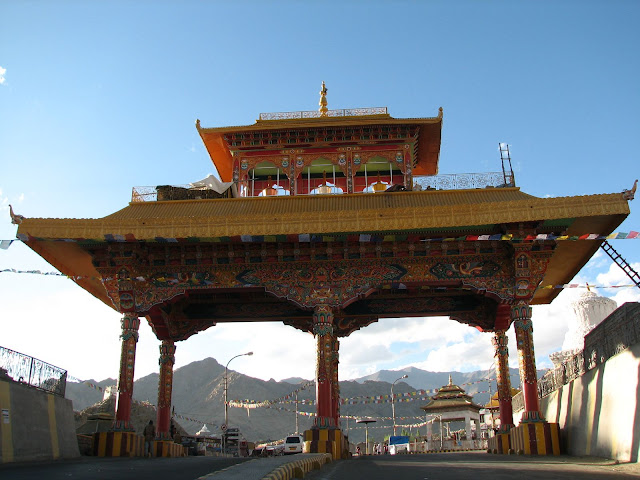
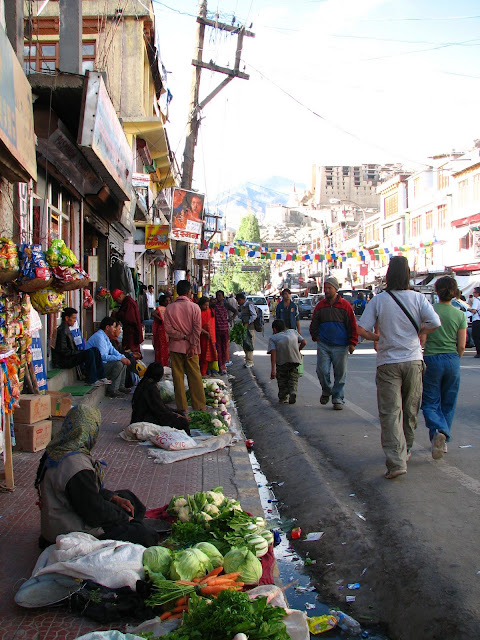
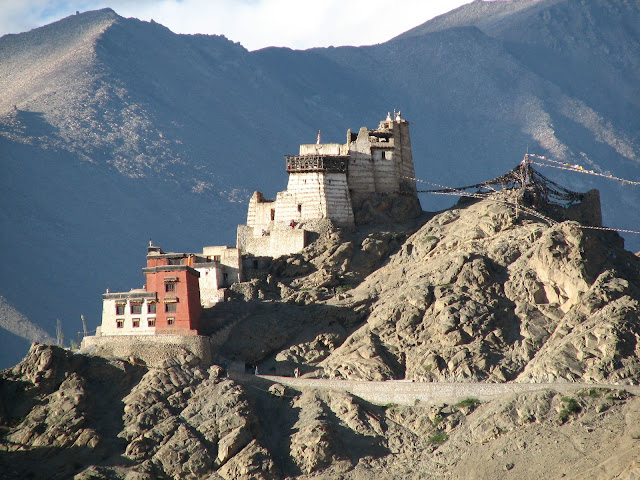


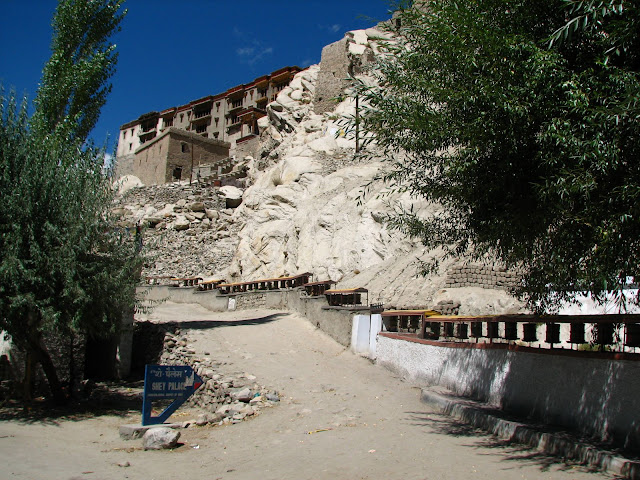



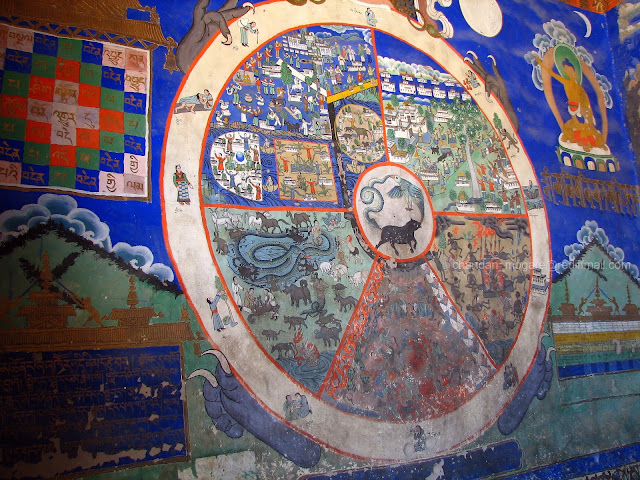





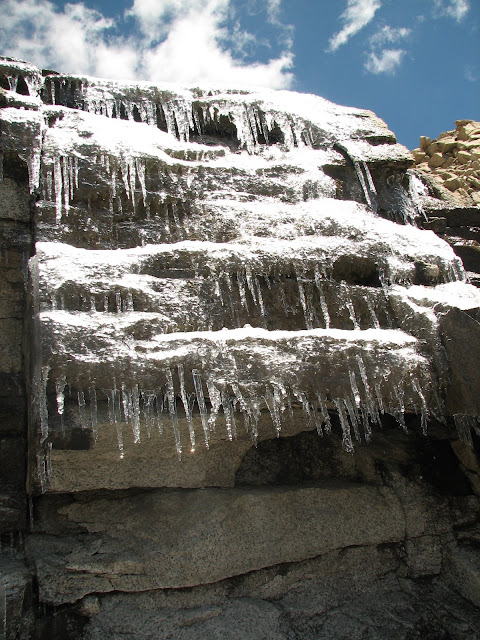









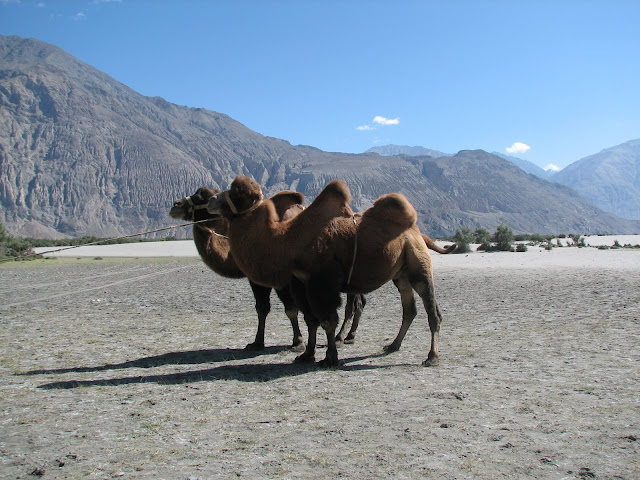




.JPG)












No comments:
Post a Comment